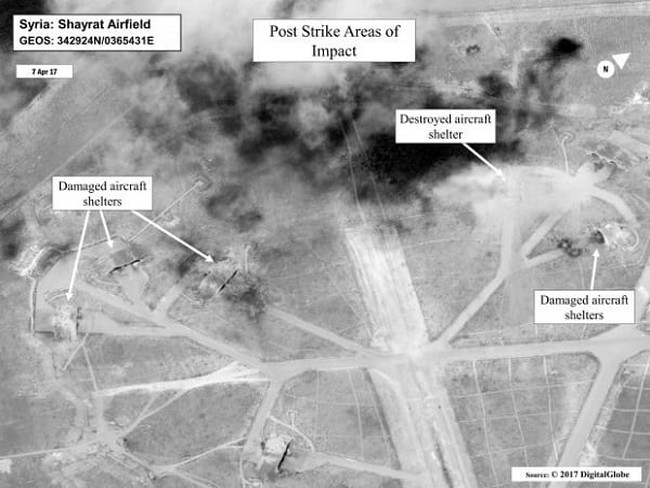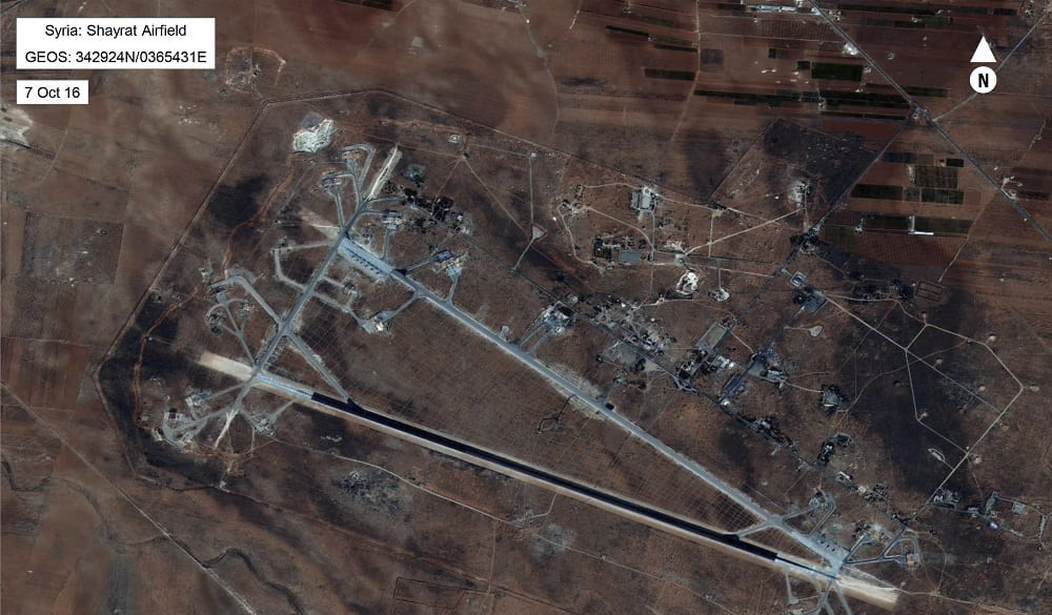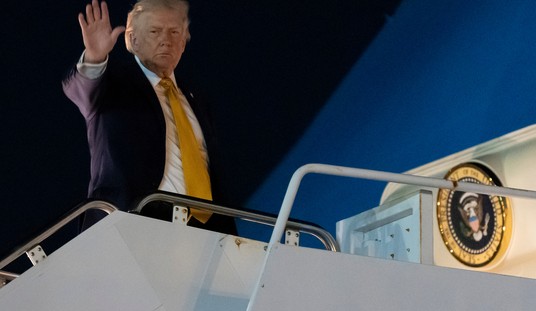Now that they have lost the ability to whack Trump for inaction on Assad’s chemical attack in Syria, the left is beginning to claim that the strike was ineffective. I’ve had more training in weapons effects and targeting than anyone I’ve seen writing on the subject and my military background is operations and plans. I’m not going to pretend that I have inside knowledge of the strikes but a lot of things that are being pointed to as evidence of ineffectiveness are anything but that.
I’m going to use for my point of departure an article at left-leaning The Intercept: Trump Surrenders Element of Surprise by Warning Russia of Planned Strike on Its Ally Syria. The author, by the way, doesn’t have the credentials to even attempt what he’s trying to do, but whatever. If you are on the left and a journalist you know everything about everything, intuitively.
Fact: About 60 hours elapsed between the Syrian gas attack and the first Tomahawks splashing. For a retaliatory strike ordered by the National Command Authority that is pretty fast. There is a lot that we simply don’t know about the Syrian command structure. I am agnostic on whether the gas attack was a deliberate in-your-face to Trump by Assad (personally, I see this as very unlikely and will remain unconvinced until signal intercepts prove me wrong) or an over-the-top action by a local commander in response to a local issue (most likely). If the first scenario is correct, then “surprise” was never really possible because Assad would have factored in the possibility of a retaliatory strike. If the latter is correct then some surprise, though not absolute surprise, would have been achieved.
More from the article:
No doubt fearing the grave risk of killing Russian military personnel on the ground in Syria, the United States military gave Russia advance notice before launching cruise missile strikes overnight on a Syrian air base that is used to store chemical weapons, according to a U.S. intelligence assessment.
Defense official: there were Russians stationed at the base the US struck in Syria tonight, but US informed them beforehand @ForeignPolicy
— paul mcleary (@paulmcleary) April 7, 2017
A Pentagon spokesman, Capt. Jeff Davis, said in a statement that a pre-exiting “deconfliction” channel, set up to keep American and Russian jets from crossing paths in the skies over Syria, was used to disclose the planned attack to Russia. “U.S. military planners took precautions to minimize risk to Russian or Syrian personnel located at the airfield,” Davis said.
This should not surprise sane people. The objective was to send a message to the regime and to impede its ability to carry out future attacks. Three hours notice to abandon ship is not a lot of time and considering the time-on-target was around 4 am, it would be challenging to alert the airbase staff, get the word to the barracks, get the troops mustered, get transportation, and get out. It certainly was not enough time to evacuate aircraft (more later). Russians and Syrians are intermixed at airbases and warning them to get out was the correct course of action unless you are one of the nutjobs who thinks we should be racking up a body count of Russian military personnel.
The number of people that seem to believe we should be trying to goad Russia into a military conflict never ceases to surprise me.
The target was an airbase.

An airfield is one of the most difficult targets to destroy from a civilian perspective. There are basically two ways of hitting a runway. You can try to physically damage it. This is hard. Runways are typically reinforced concrete and fairly thick. A standard bomb will mess up the surface but a moderately competent crew of North Vietnamese coolies will have it back in operation in a few hours.
There are specialized munitions like the French Durandal which is a bomb with a rocket booster. The booster drills the bomb deep into the ground and the explosion pushes the surface upwards — think Mother of all Pimples — and to repair it you have to excavate tens of feet down and rebuild the runway. These are not deliverable by Tomahawk. The other way is by using what is called a runway denial munition, like the British JP-233. This is a mix of runway penetrating bomblets and anti-personnel mines. The cratering isn’t all that impressive but you can’t fix the cratering until you clear the mines. Like Durandal, it can’t be delivered by Tomahawk.
The bottom line is that if you are evaluating an airfield attack by damage to the runways you are going to be disappointed.
The most impressive thing to look at is burned out aircraft. With a patron like Russia, Syria will replace its aircraft losses in short order.
If you are familiar at all with the stories of Pearl Harbor the critique you hear over and over, other than “they missed the flat tops,” is that while Battleship Row was mauled the Japanese ignored the oil tanks and machine shops. New ships could be moved to Pearl Harbor. Losing the oil tanks and machine shops would have shut down the entire base for months. The same applies to the airfield. The real targets are the air traffic control facility, repair shops, machine shops, spare parts hangars, munitions bunkers, fuel storage, etc. Without parts, fuel, munitions, and the ability to take off and land, the airfield and aircraft are pretty useless.
Here is some Russian TV video of the target:
Battle damage assessment: limited #Syria #Trump https://t.co/re3hF5WBPP
— Yaroslav Trofimov (@yarotrof) April 7, 2017
Russian video suggests SyAF had moved its aircraft into the open to evade US Tomahawk attack https://t.co/AfQ05hEJlt
— Vijainder K Thakur (@vkthakur) April 7, 2017
If you look at the post strike images, there is a lot of doubt in my mind that this video actually shows what it claims to. There are no aircraft parked in the open.
Here are some stills
More images from Sharyat AB showing more of SyAAF SU-22s undamaged after #UnitedStates strikes. #Syria #Homs pic.twitter.com/2tNRe5unGD
— Aldin 🇧🇦 (@aldin_ww) April 7, 2017
here you can see two reinforced alert hangars untouched
Following images are credited to the Instagram account of Evgeyny Poddubny.

An aircraft alert hangar that has been destroyed.

Destroyed aircraft inside destroyed alert hangar.

Syrian aircraft (looks like a museum worthy MiG-21… anyone else have a vote? Definitely and SU-22) safe in an alert hangar.
While 59 Tomahawks sounds like a lot, it really isn’t. You have several aim points for the mission and multiple missiles targeted at aim points for redundancy (history of the size of Tomahawk strikes in the past). But if you look at the post-strike imagery and compare it to the image from October 2016 at the beginning of this article you’ll see the area of buildings north of the runways is demolished.

And you can see strikes on aircraft shelters:


If one puts their political desires aside, the strike last night seems to have done what it was designed to do. The damage was to the support structure of the airfield and a decision was made to minimize casualties. The real proof of its effectiveness is not a question of how much rubble was bounced how high but in what comes next.














Join the conversation as a VIP Member